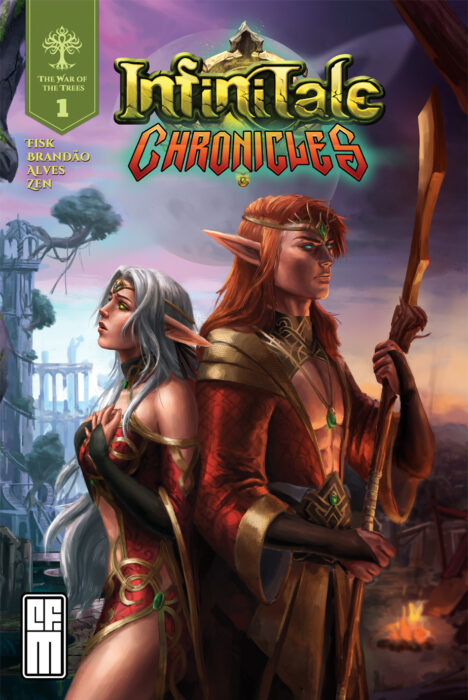Over time, I think all creators find themselves wondering where their creation fits into the entertainment landscape. I’ve witnessed (and conducted) many product pitches over the the years and have found it to be a bit of struggle to both present a unique product and to assure prospective audiences that the product isn’t completely unrelatable.
Most of us are familiar with the “Elevator Pitch.” For those that aren’t, we must first acknowledge that we live in a superficial world full of ADD-addled people. Nobody wants to invest any cerebral energy into an advertisement. The Elevator Pitch distills your product’s advertisement into something that could be explained in a brief elevator ride.
This often forces the person pitching to rely upon a form of mental shorthand: similarities. Rather than explaining a love story about two star-crossed lovers from opposing wealthy families, one can instead simply reference “Romeo & Juliet.”
Well, the same tactic can be applied to your target audience when you’re giving your product pitch. Sure, you could go on a lengthy, highly-detailed diatribe about the rich setting your deeply complex characters reside in to uninitiated prospects. You will probably lose more than half of your potential audience by doing that. Or, you could focus your pitch to a target audience (knowing that you cannot appeal to everyone). If your target audience is familiar with cyberpunk, synth-wave music, and science fiction themes, it’s probably not a good idea to use similarities for your shorthand that reference Twilight, LL Cool J, and Tolstoy’s War & Peace when pitching your product.
Where am I going with all this? I have received some feedback over the years surrounding confusion as to how to classify Infinitale: Chronicles. Is it like Conan? Is it for young kids? Is it shallow fantasy with “fairies n’ shit?” Is it a Dungeons & Dragons ripoff?
I’ll attempt to help better classify what Infinitale: Chronicles is and where it resides within the ever-growing crowds of entertainment by stating its inspirations & influences.
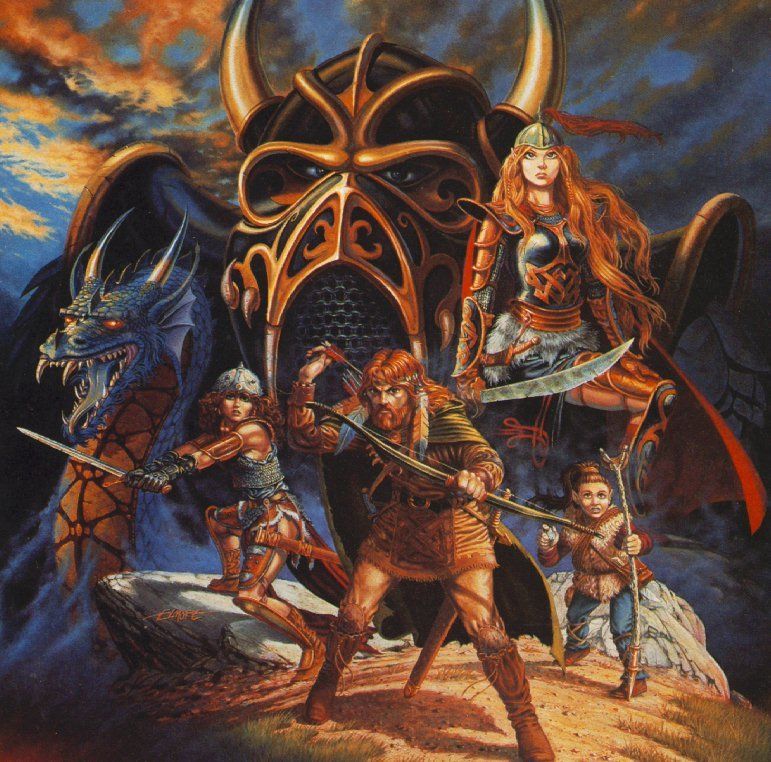
AD&D 2nd Edition: Dragonlance
Sure, Dungeons & Dragons was a huge influence in crafting my storytelling. I particularly enjoyed the Dragonlance series and its well-developed characters. Tanis, the mixed race leader that is torn between two worlds – one of comfort and one of excitement. Caramon is the “dumb” twin to a self-absorbed weakling of a brother. The dysfunctional duo would later become the focal point of an entire trilogy. The barbarian princess, tasked with returning a lost religion to the world, and her tribal outcast lover offered an interesting romance plot to my 13 year old mind. Other characters, like a wily comic-relief Peter-Pan character, Tasslehoff, and an elderly veteran curmudgeon rounded out the principle cast. There were also dashing knights and doe-eyed, buff bar maidens.
Ultimately, the group of adventurers, forced to stick together for survival in an evil world, inspired early incarnations of Infinitale: Chronicles. In the very beginning of developing the Infinitale role-playing systems, I had shamelessly “borrowed” several aspects from Dragonlance. The world of Hesperia, like the world of Krynn, had a mysterious absence (or, shortage) of ferrous metals. An ancient cataclysm led to a world of false gods and evil ruling over the weak. Fortunately, I discovered many other muses and started developing my own aspects as Infinitale became its own universe. I had no desire to make a “ripoff” of an already beloved franchise.
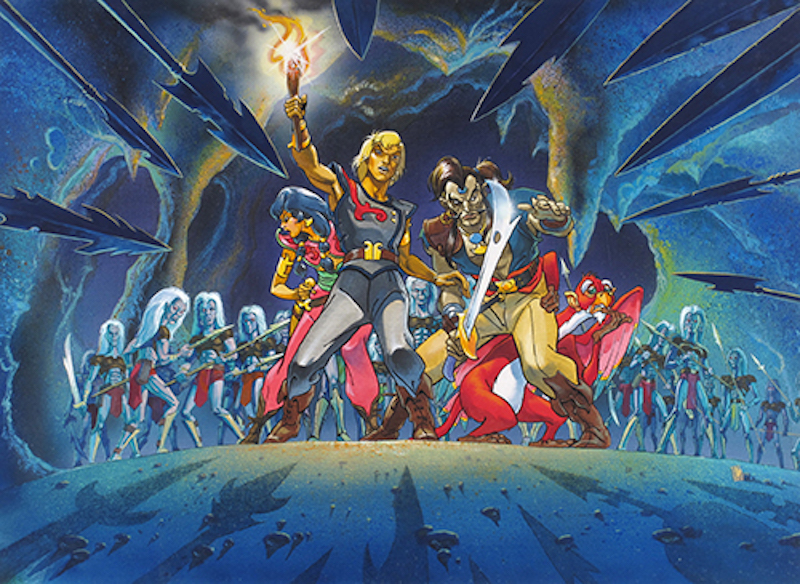
The Pirates of Dark Water
It was the early 1990s and I had just entered my teens. My Saturday mornings were spent at my father’s duplex (as he had custody of me on the weekends). As a Gen X kid that was babysat by the TV, I grew attached to several TV shows and became big fans of them. One such show was a half-hour long, big-budget toy commercial that aired during that golden block of Saturday morning cartoons called “The Pirates of Dark Water.”
It was a fantasy series that took place on the alien world of Mer. The motley crew of heroes: Ren the Prince, Tula the sexy “Ecomancer”, Ioz the lovable scoundrel, and Niddler the comic relief animal companion set sail in pursuit of 13 MacGuffins. This led them to many interesting adventures that were full of moral lessons and physical challenges. The villain of the series, a fat Captain Hook-type antagonist, chased the heroes from episode to episode because he wanted the MacGuffins for himself.
Unfortunately, the series was cancelled before all 13 MacGuffins could be obtained. It was an unsatisfying conclusion to the show but the comic books helped fill in the gaps and even complete the quest.
I drew a lot of inspiration from the character relationships and moral lessons provided by this series. Astute readers may find some of these influences within Infinitale: Chronicles.
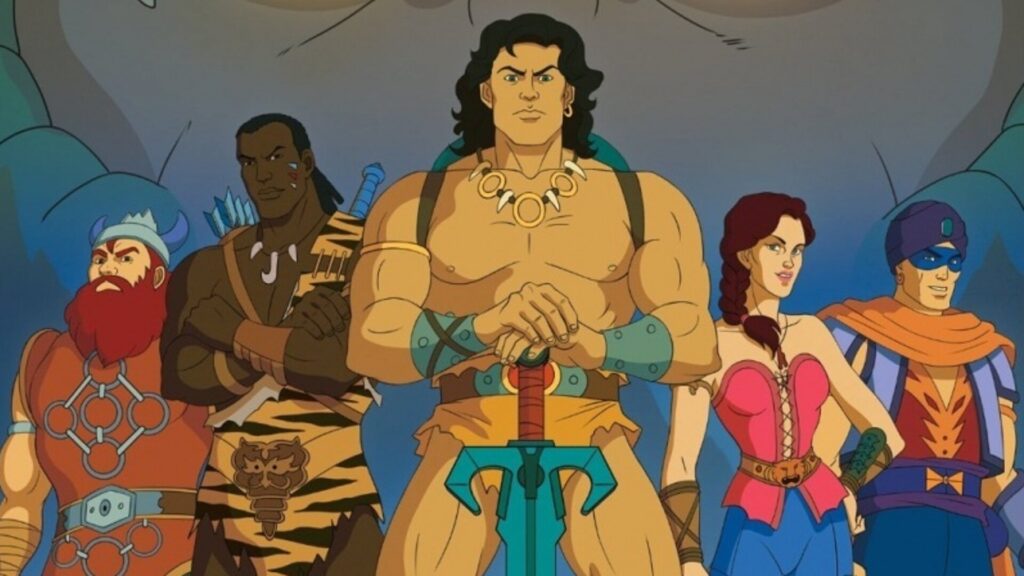
Conan The Adventurer
Much like the previously listed cartoon series, my weekday afternoons were often plopped right in front of the TV to watch blocks of shows geared toward me (and those younger than me). Conan The Adventurer caught my attention immediately. As a fan of the Arnold films of the 1980s, and campy live action shows like Hercules: The Legendary Journeys & Xena: Warrior Princes, I was hooked! This version of Conan was greatly softened from the Robert E. Howard novels I would later read. Instead of a sex-crazed, roided-up killing machine, the Conan from this series was more family-friendly and was joined by a diverse crew of heroes to avenge wrongs inflicted upon them by followers of a snake-worshipping religion. It had all the magic and adventure a young fantasy nerd could ever want! Magical metal (this show’s MacGuffin) was the key to destroying the snake-god …or bringing about his arrival to the world and the doom of mankind.
I enjoyed the episodic approach of this show and applied that to the gaming sessions from which Infinitale: Chronicles was being developed. Every character had their own story — their own chance to shine in the spotlight. It wasn’t just the story of a hero and his sidekicks. Complex character motivations would be something I greatly appreciated as I matured as a consumer and creator of fiction. This was also carried over to Infinitale: Chronicles’ writing. Sure, Queen Aislinn is heavily featured in the imagery of the first book. In no way is she the “main hero.” The principal cast of characters changes throughout the 10 book series and each hero is given a chance to shine.
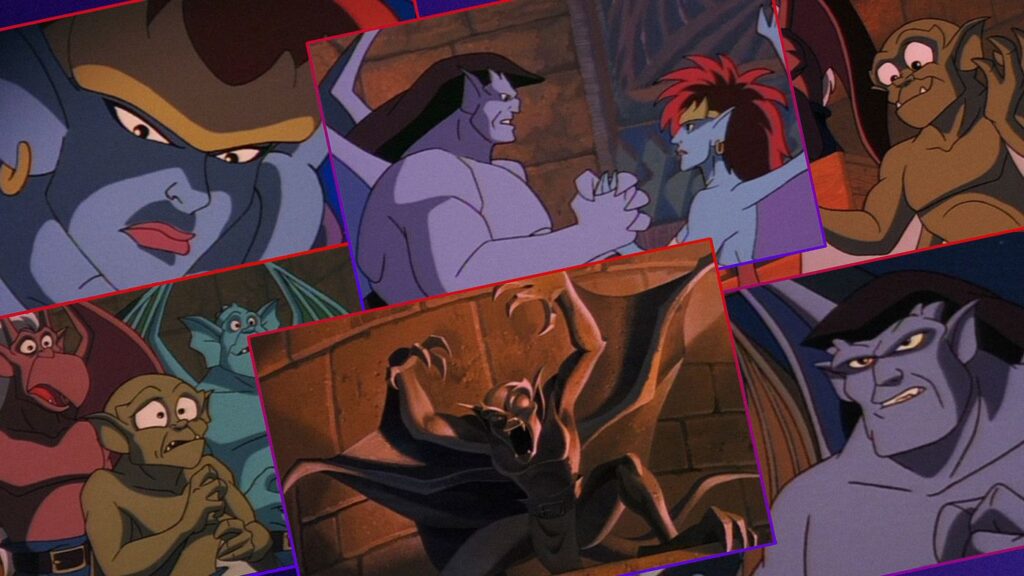
Disney’s Gargoyles
In addition to Conan The Adventurer, I also watched a two-hour block of cartoons known as “The Disney Afternoon.” Beyond the Ducktales & Rescue Rangers shows, geared toward very young kids, Disney introduced a series for teenagers that explored a lot of really mature themes. Gargoyles opened with an epic narration by the great Keith David, “One thousand years ago, superstition and the sword ruled. It was a time of darkness. It was a world of fear. It was the age of gargoyles.” That set the tone and made viewers aware they weren’t going to see a bunch of anthropomorphic animals doing silly comedic bits. Despite the voice acting cast feeling like the retirement home for Star Trek: The Next Generation, the series was dark and more mature than some idealistic sci-fi romp. Characters got shot (with actual bullets!), sexual relationships were alluded to, and the ever-present dread of death loomed over the temporally-displaced heroes.
I loved those darker themes and explored them even further when developing the Infinitale role-playing game. The bleakness of despair can lead otherwise rational people to do incredibly irrational things.

Logan’s Run
Even though this sexy, 1970s film, full of nudity & violence, wasn’t intended for kids, I watched it when I was very young. Oddly enough, I was also able to understand the concepts it was presenting. Logan’s Run is a dystopian sci-fi story about a heavily-regulated world where the young live in a hedonistic ignorance with all of their whims and desires fulfilled by technology. Upon entering adulthood at age 30, they are expected to willingly sacrifice themselves for the greater good of their orderly society. Obviously, not everyone wants the good times to end and they defy this tenet, “running” from their obligation to kill themselves. The eponymous “Logan” belongs to a group of suicide-enforcement police that hunt down and execute these “Runners.” Logan is tasked to locate and infiltrate a secret group of Runners that evaded justice and continued life beyond their ordained expiration dates. This makes him artificially aged so that he can masquerade as a Runner. The consequences of this awakens Logan to the illusions of the artificial society he was living in and he ultimately joins these fugitives, uncovering the truth beyond the lies of his former life.
When I started planning the very beginning of Infinitale: Chronicles, Logan’s Run came to mind. Rather than just ripping it off outright, I instead dug into the concepts that inspired the film (and its book). It led me to Plato’s Allegory of the Cave and I adapted its messages into the opening adventures of the fantasy world I was building.

European Folklore
Dungeons & Dragons, Warcraft, Warhammer, and pretty much every known modern fantasy property we see today owes its origins to JRR Tolkien’s The Lord of The Rings. When eking out my own space in this now crowded landscape of swords & sorcery, I didn’t want to be just another “Tolkien Ripoff” or worse — a ripoff of a ripoff. This compelled me to seek inspiration in what inspired Tolkien’s works.
It was the early 1990s and the Internet wasn’t what it is today. Google and Wikipedia were many years away from existing and all I had access to was my town library. It was here I discovered collective works covering the vibrant folklore of various European cultures: the Volsung Sagas of Iceland, the Kalevala of Finland, the Norse tales of the Jotun, Dwarfs, Dökkálfar and Ljósálfar, the Mabinogion (and Cad Goddeau) of Wales, and the Tuatha Dé Danann & Fomorians of ancient Hibernia (Ireland).
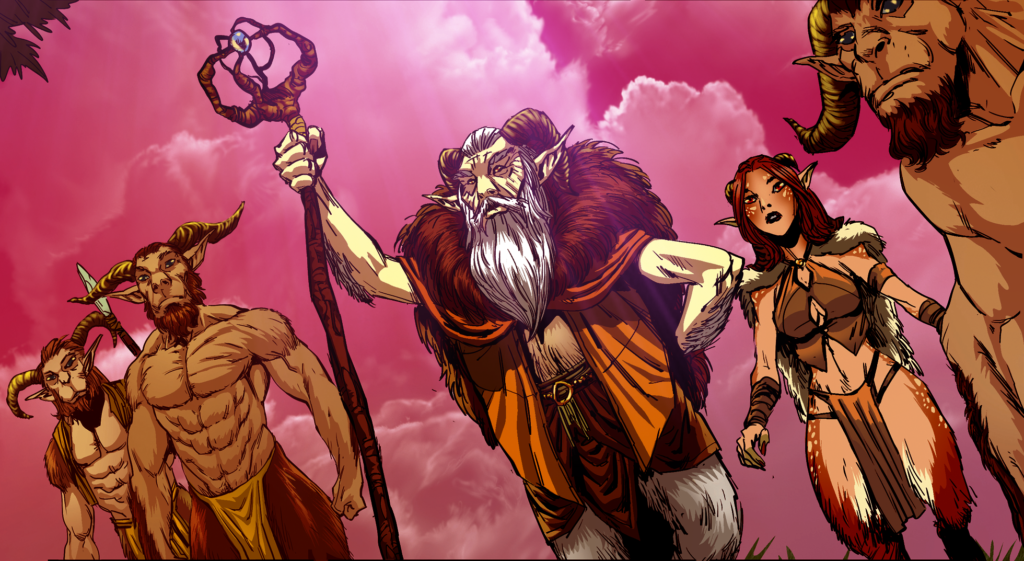
Conclusion
So where does this leave Infinitale: Chronicles? I would say my stories are a “high-fantasy epic inspired by European folklore with heavy influences from 90s adventure cartoons.”
Infinitale: Chronicles is not about “babes, blades, and brutes.” It’s not going to appeal to those seeking artistically rendered tits and muscles. The stories don’t revolve around quip-slinging “badasses” where every panel has a new action shot and gore. It’s an adventure that explores the horrors of growing up and facing life beyond the safety of childhood. It exposes the dangers of seeking comfort over freedom. Ultimately, it’s an expression of hope in the face of crushing despair. Not everyone will make it but it is through their deeds that future generations can learn how to avoid the hardships of those that came before them.
I hope this provides some compelling insight into what inspired and influenced Infinitale: Chronicles.
Book 2 is well into production and we’re hoping to kick off its crowdfunding campaign by Q4 2023 (December).

